Oribatid mite coprolite sightings – a
transient craze ?
Petrified wood does not only preserve the tissue structure of wood from
bygone times but occasionally also its pests. Small wonder that
irregular-shaped tiny holes in the wood with dark clots inside are
interpreted as mites’ burrows with coprolites. Leaving the question
aside whether the clots in some samples are really what they are
believed to be, a very few observations make that interpretation highly
dubious.
Nevertheless the oribatid mites, or rather their coprolites, became
increasingly popular among palaeontologists in the 1990s. I did not try
to find out when and where it started. The first dubious coprolite
images which came to my notice were Fig.1 and Fig.2.
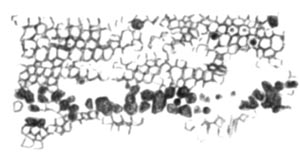
Fig.1: Silicified wood from the Wetterau area (Permian), Germany; cross
section with local damage thought to be caused by mites in [1]. A few
intact wood cells with clot inside (above right) raise doubts
concerning the coprolite hypothesis. Drawing after
photograph in [1].
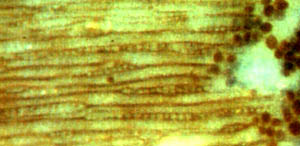
Fig.2 (right): Silicified wood from Schallodenbach (Lower Permian),
Germany;
longitudinal section with local damage thought to be caused by mites in
[2]. The individual small clot deep inside a tracheid raises doubts
concerning the
coprolite hypothesis. Detail of photograph in [2].
Close
inspection of the pictures raises
doubts as one can see individual clots within intact wood cells where
they
hardly could have been dropped by mites. The doubts concerning mite
frass are
confirmed by another sample (Fig.3), where clots are seen in three
cells in a
row. Accepting the coprolite hypothesis would imply that three tiny
mites had
crept along neighbouring tracheids and deposited their droppings at
exactly the
same height.
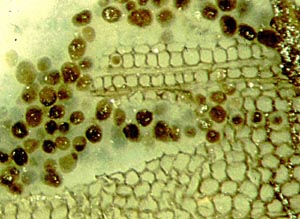
Fig.3: Silicified wood from Schallodenbach (Lower Permian), Germany,
cross section with local damage. Three intact wood cells in a row with
clot inside may serve as evidence against the coprolite hypothesis.
Own sample, kindly provided by Ch. Krüger ,
Schallodenbach.
In addition to the more or less rounded clots formed in the xylem
cells, the sample of Fig.3 contains also distinctly angular clots
formed in the larger pith cells (Fig. 4). Clots with angular shape
should serve as convincing evidence against the interpretation as
coprolites.
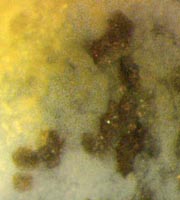 Fig.4
(right):
Silicified wood from Schallodenbach (Lower Permian), Germany, same
sample as Fig.3, cross section of pith cavity in coniferous-type stem
with only those pith cells preserved in outline which are filled with
dark matter.
Fig.4
(right):
Silicified wood from Schallodenbach (Lower Permian), Germany, same
sample as Fig.3, cross section of pith cavity in coniferous-type stem
with only those pith cells preserved in outline which are filled with
dark matter.
Nevertheless, the idea of discovering mite coprolites in one's fossil
plant
samples seemed to be so tempting to some palaeontologists that it
spread worldwide, even to Antarctica [3]. Apparently not even the fact
that oribatid mite fossils were absent in the Carboniferous, Permian,
and Triassic where the alleged coprolites were most abundant [4] could
dampen the eagerness with which the idea was accepted without being
checked against common sense. Hence, sightings of oribatid mite
coprolites were soon reported from samples stored at the
Naturkunde-Museum Chemnitz [5-8]. About a century ago, the angular
clots within plant tissue, including those in Fig.5, had probably been
noticed by the clever J.T.
Sterzel (1841-1914)
who was cautious enough not to propose an interpretation.
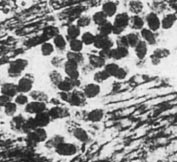
Fig.5: Angular clots in the tissue of the Permian climbing fern
Ankyropteris brongniartii,
recently interpreted as mite coprolites
[5-7].
Sample Nr. K 4568, stored at the Museum für Naturkunde Chemnitz
since Sterzel's
time.
In view of the fossil evidence the following can be stated: Clots
confined to the interior of intact cells (Figs.1-4) and angular
clots with sizes and shapes like the cells of the damaged tissue
harbouring
them (Figs.4,5) cannot be interpreted as coprolites. Although the
tell-tale shape and size is more or less evident from pictures in
several publications, the authors apparently did not consider this
worth mentioning.
The pictures most probably show a kind of wood rot caused by a fungus
as
explained in Rhynie
Chert News 28.
From 2007 on when
fossil oribatid mite coprolites were still a favourite topic among
palaeontologists, this alternative
interpretation had been sent to the authors listed below. It is hoped
that
such spread of information, together with the message conveyed by this
essay, will help to make the craze of
oribatid mite coprolite sightings, as well as other misconceptions,
fade away and vanish.
See also the special contribution "Antarctic shit".
H.-J.
Weiss
2010
[1] K.
Goth, V. Wilde : Fraßspuren in permischen
Hölzern aus der Wetterau,
Senckenbergiana letaea 72(1992), 1-6.
[2] R.
Noll, V. Wilde : Conifers from the „Uplands“
– Petrified wood from Central Germany,
in:
U. Dernbach, W.D. Tidwell : Secrets of Petrified Plants,
D'ORO
Publ., 2002.
[3] D.W.
Kellog, E.L. Taylor : Evidence of oribatid mite
detrivory in Antarctica during the Late Paleozoic and Mesozoic,
J. of Paleontology 78(2004), 1146-53.
[4] C.C.Labandeira,
T.L. Phillips, R.A. Norton : Oribatid
mites and the decomposition of plant tissues in paleozoic coal swamp
forests,
Palaios 12(1997), 319-53.
[5] R.
Rössler : The late palaeozoic tree fern
Psaronius - an ecosystem unto itself,
Rev. Palaeobot. Palyn. 108(2000), 55-74.
[6] R.
Rössler : Der versteinerte Wald von Chemnitz, 2001, p
141,155,169.
[7] R.
Rössler : Between precious inheritance and immediate
experience,
in: U. Dernbach, W.D. Tidwell
: Secrets
of Petrified Plants, D'ORO Publ., 2002.
[8] R.
Rössler: Two remarkable Permian petrified forests,
Geol. Soc. London Special Publ.
265(2006), 39-63.
|

|
 3 3 |

 3
3


 Fig.4
(right):
Silicified wood from Schallodenbach (Lower Permian), Germany, same
sample as Fig.3, cross section of pith cavity in coniferous-type stem
with only those pith cells preserved in outline which are filled with
dark matter.
Fig.4
(right):
Silicified wood from Schallodenbach (Lower Permian), Germany, same
sample as Fig.3, cross section of pith cavity in coniferous-type stem
with only those pith cells preserved in outline which are filled with
dark matter. 

 3
3